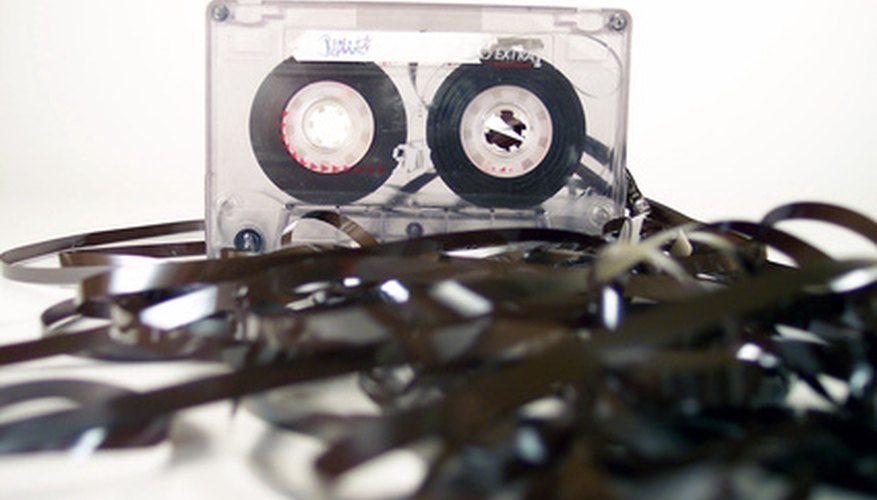Cassette tapes were first mass-produced in the early 1960s. Their popularity peaked in the 1980s with the introduction of the Sony Walkman. Thanks to the use of tape decks in automobiles, they continued to be popular well into the 1990s. Cassette tapes have been largely replaced, first by compact discs and then by MP3s. The life cycle of tapes is relatively short, which is a matter of concern to consumers.
Lifespan of a Cassette Tape
Cassette tapes have a very finite life; the lifespan of all magnetic tape is 10 to 30 years, with a low-quality cassette lasting ten years and a high quality tape lasting longer. Such short lifespans may appear frustrating, especially if you routinely work with longer-lasting archival materials; however, the lifespan of the cassette tape itself is roughly approximate to the lifespan of the technology used to play the tape.
Telltale Signs of Degradation
The first indications that a tape is degrading are almost inaudible as signal is lost to dirt particles. This loss of sound is called a dropout. As time goes on, the damage is more apparent. Portions of the tape become stretched, causing the tape to sound as the player was speeding up and slowing down. Long shrill, intermittent wheezes and squeals may appear, making the tape almost intolerable for even non-audiophiles.
- The first indications that a tape is degrading are almost inaudible as signal is lost to dirt particles.
Unlike digital media, in which data loss is abrupt and catastrophic, data loss for analogue media occurs very gradually. Moreover, it is very rare that the entire signal will be lost.
Why Tape Degrades
Cassette tapes have two or three distinct layers. From the bottom up, they include the following: backcoat, omitted altogether in cheap tapes; substrate, the thickest layer; and topcoat, where the sound is laid down. The topcoat consists of magnetic particles embedded in a binder. Also embedded in the binder are tiny reservoirs of lubricant that keep the tape flexible.
Most authorities attribute the short life cycle of cassette tapes to the binder. Many of the signs of degradation are caused by defects in the binder. Tapes can become brittle as lubrication is lost from the binder. The tape may soft or become sticky, both of which damage the magnetic signal. Lastly, excessive humidity can damage the binder.
- Cassette tapes have two or three distinct layers.
- The tape may soft or become sticky, both of which damage the magnetic signal.
Magnetic Degradation
The signal you hear when playing a cassette tape is caused by the magnetic particles. The magnetic particles are also degrade and distort the signal. As the binder stops being cohesive, the magnetic particles literally fall off, causing dropouts. In other instances, they lose their magnetic strength (remanence) which causes loss of the signal.
- The signal you hear when playing a cassette tape is caused by the magnetic particles.
- In other instances, they lose their magnetic strength (remanence) which causes loss of the signal.
Considerations
Storage also effects the lifespan of a cassette tape. If the tape has been properly stored and protected from humidity and temperature extremes, the lifespan will be much longer. Humidity is particularly damaging because it causes the binder to become sticky.
Lastly, the number of times a tape has been played is directly proportional to it's lifespan. Many authorities believe that a tape degrades every time it is played.
- Storage also effects the lifespan of a cassette tape.
- Many authorities believe that a tape degrades every time it is played.
